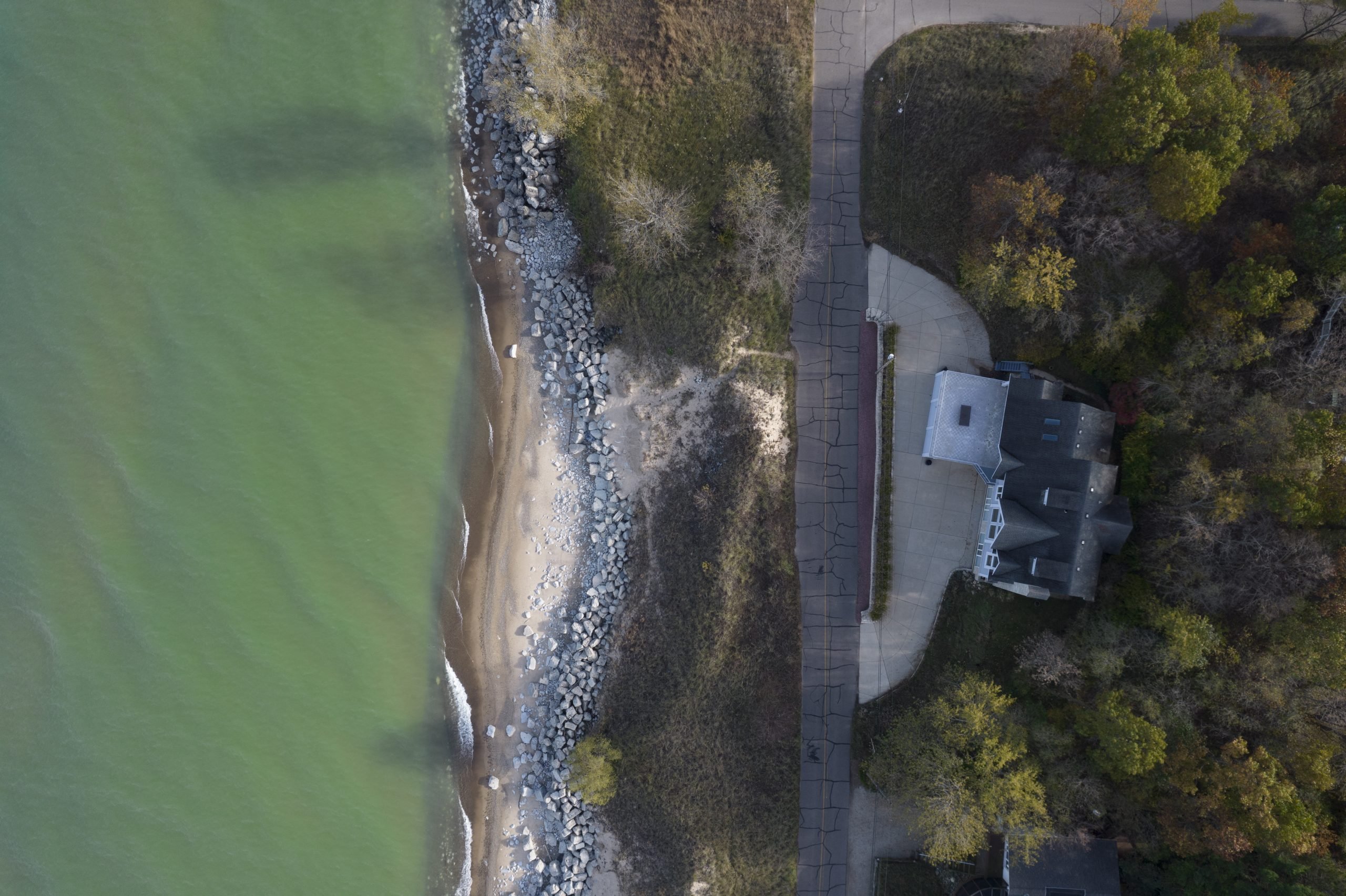
An ancient mini-Stonehenge stands underwater in Grand Traverse Bay, part of Lake Michigan.
Looking for shipwrecks in this area, which was a busy 19th- and 20th-century maritime trade route, Mark Holley, professor of underwater archaeology at Northwestern Michigan University, first came across a rock that he said bears a prehistoric carving of a mastodon. On further investigation, he discovered a Stonehenge-like arrangement of ancient stones.
There’s an outer ring of stones, about 40 feet in diameter, and an inner ring about 20 feet in diameter, both made of local granite. They stand 40 feet below the water’s surface, and the stones are some 9,000 years old, making this one of the oldest structures ever discovered in North America. At that time, said Holley, the lake bed was dry. Stonehenge would not be erected for another 4,000 years.
Mark Holley with an image of a stone he says is carved with an image of a mastodon. Courtesy Mark Holley.
Holley points out that the stones are not of anything like the size of those at Stonehenge, instead ranging in size from that of a basketball to that of a compact car. There’s also a number of stones arranged in a line over one mile long.
A sonar image of the stones. Courtesy Creative Commons.
Holley has not revealed the precise location of the site, which is in an area popular among recreational divers. He instead first revealed its location to the Grand Traverse Band of Ottawa and Chippewa tribes as a gesture of respect.
Holley has pointed out that many experts would prefer to investigate such stones in person to authenticate them, but that these experts aren’t necessarily trained scuba divers, which has slowed down the authentication process.